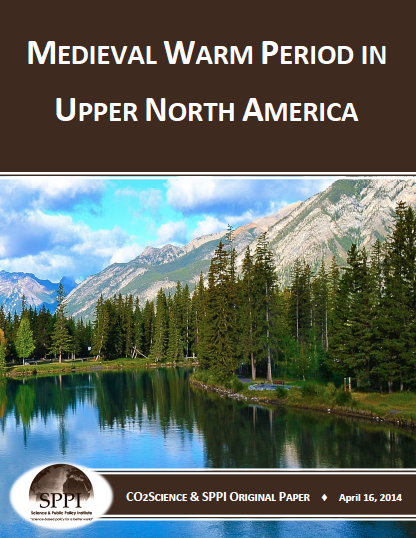News / Nature
Medieval Warm Period In Upper North America

Climate alarmists claim that rising atmospheric CO2 concentrations due to the burning of fossil fuels, such as coal, gas and oil, have raised global air temperatures to their highest level in the past one to two millennia. And, therefore, investigating the possibility of a period of equal global warmth within the past one to two thousand years has become a high-priority enterprise; for if such a period could be shown to have existed, when the atmosphere's CO2 concentration was far less than it is today, there would be no compelling reason to attribute the warmth of our day to the CO2 released to the air by mankind since the beginning of the Industrial Revolution. Thus, in this review of the pertinent scientific literature, results of the search for such knowledge are presented for studies conducted within the borders of Canada and other regions north of the lower 48 states of the United States of America.
Arseneault and Payette (1997)1 analyzed tree-ring and growth-form sequences obtained from more than 300 spruce remains buried in a presently treeless peatland located near the tree line in northern Québec in order to produce a proxy record of climate for this region between AD 690 and 1591. This effort revealed that over the course of this 900-year time period, the trees of the region experienced several episodes of both suppressed and rapid growth, indicative of both colder and warmer conditions, respectively, than those of the present. Cooler (suppressed growth) conditions prevailed between AD 760-860 and 1025-1400, while warmer (rapid growth) conditions were prevalent between AD 700-750, 860-1000, 1400-1450 and 1500-1570.
Further analysis of the warm period between AD 860 and 1000 led the two researchers to conclude that the warmth experienced in northern Quebec during this time period coincided with the Medieval Warm Period that was experienced across the North Atlantic and Northern Europe, which "exceeded in duration and magnitude both the 16th and 20th century warm periods identified previously [by other scientists] using the same methods." Furthermore, on the basis of current annual temperatures at their study site and the northernmost 20th century location of the forest, which at that time was 130 km south of their site, they concluded that the "Medieval Warm Period was approximately 1°C warmer than the 20th century."
Read More...
